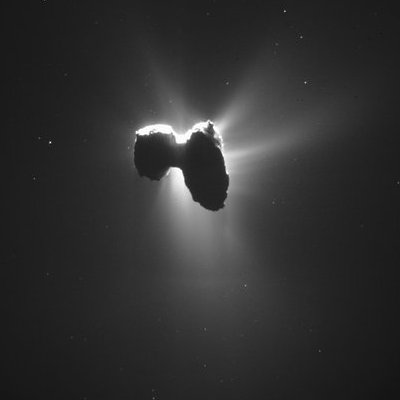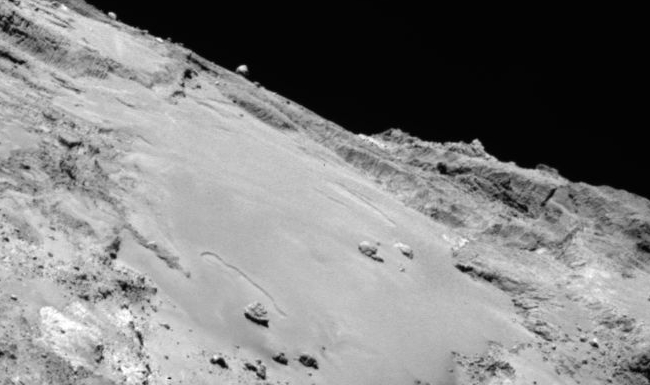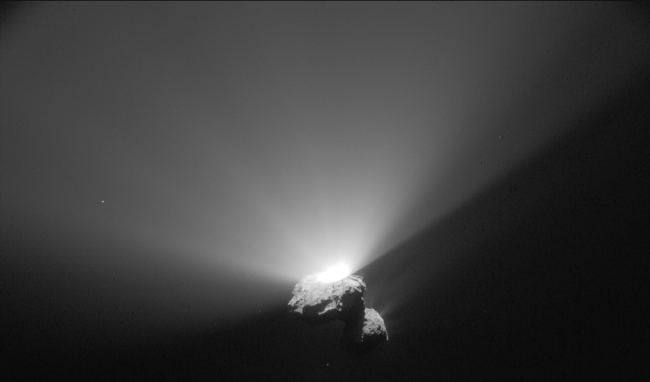Looking back at Comet 67P/C-G

Cool image time! As part of its research plan, Rosetta has been moved outward from Comet 67P/C-G for the next few weeks in order to better study its coma and tail. In this new position, engineers were able to maneuver the spacecraft so that it was flying about 600 miles farther from the Sun and could look back and see the Sun being eclipsed by the comet.
Thanks to the combination of a long, four-second exposure, no attenuation filter and a low-gain setting on the analogue signal processor of NAVCAM (a setting that is used to image bright targets), the image reveals the bright environment of the comet, displaying beautiful outflows of activity streaming away from the nucleus in various directions. It is interesting to note hints of the shadow cast by the nucleus on the coma below it, as well as a number of background stars sprinkled across the image.
In the next week the spacecraft will move back in close to the comet.

Cool image time! As part of its research plan, Rosetta has been moved outward from Comet 67P/C-G for the next few weeks in order to better study its coma and tail. In this new position, engineers were able to maneuver the spacecraft so that it was flying about 600 miles farther from the Sun and could look back and see the Sun being eclipsed by the comet.
Thanks to the combination of a long, four-second exposure, no attenuation filter and a low-gain setting on the analogue signal processor of NAVCAM (a setting that is used to image bright targets), the image reveals the bright environment of the comet, displaying beautiful outflows of activity streaming away from the nucleus in various directions. It is interesting to note hints of the shadow cast by the nucleus on the coma below it, as well as a number of background stars sprinkled across the image.
In the next week the spacecraft will move back in close to the comet.





